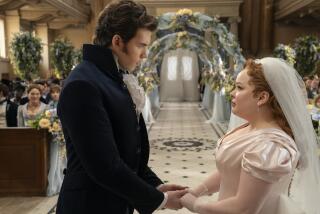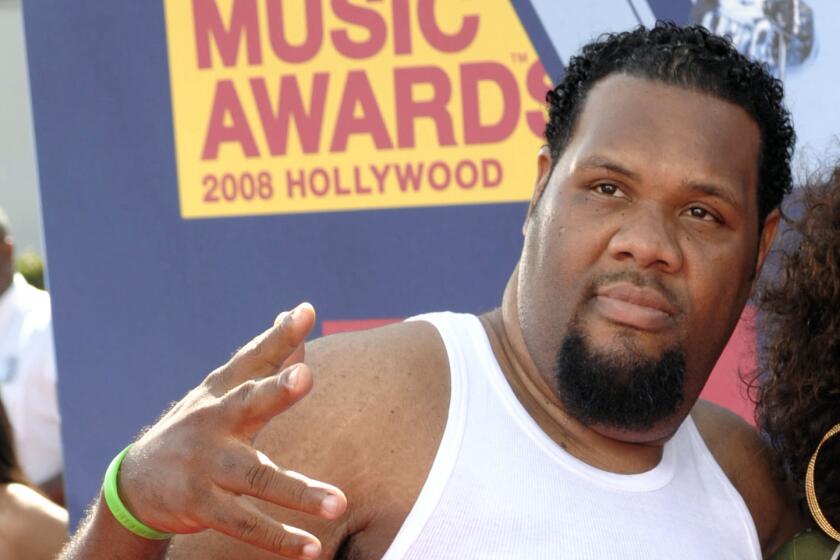Beck’s ‘Song Reader’ puts the music in other people’s hands
“Not so long ago,” writes Beck Hansen in the introduction to his new collection of tunes, “Song Reader,” “a song was only a piece of paper until it was played by someone.”
Indeed, as far back as “Pride and Prejudice,” all card-carrying members of the middle class had a piano in the parlor and a daughter or five with skills to play it. (Poor Mary. She did try.)
It’s been generations since gathering around the piano to sing the latest hits was a popular way to pass an evening, so why then are Beck’s latest available only as sheet music?
After all, it requires someone to read music to realize the songs, therefore rendering them inaccessible to a large percentage of fans. But it is a genius way to make sure people really engage with the material rather than having it be just another 100 MB on their hard drive.
Best of 2012: Movies | TV | Pop music | Jazz
Each of the 20 tunes in “Song Reader” are individually printed with high-contrast illustrations and detailed faux adverts straight from the first half of the 20th century. Amazon carries it for $22, while publisher McSweeney’s offers “Song Reader” for $34.
Often assumed to be ironic when he is making a genuine joke, Beck has obviously taken great delight in playing with the era’s over-the-top tone of voice. “Now That Your Dollar Bills Have Sprouted Wings” suggests you duet with a bill collector. “Mutilation Rag,” one of the two instrumentals, is conceptual ragtime performance art. The soon-to-be emo classic “Why Did You Make Me Care?” captures all the melodrama of a teenage breakup in shades of blue and yellow.
People who can’t read music shouldn’t feel left out. “Song Reader” is meant to be an objet d’art as much as music maker. Beck wrote the arrangements but collaborated with various orchestrators and graphic artist Jessica Hische to assemble the project.
“The way the whole package was put together and presented was more along the lines of a coffee table book,” said Beck. “It’s something that can actually be read [as well as] something that starts a conversation about our relationship with music now in comparison to how we interacted with music in the past.”
The biggest difference between then and now is that before records, there was no version-in-common of a popular song. If your Aunt Mamie played a wrong note every time in the third bar of “I Love My Wife, But Oh! You Kid!” (real title!) then unless you read music yourself or sang the song at a friend’s house, her version was the one you knew.
The other difference, and perhaps the more difficult one to conceptualize, is the sheer ubiquity of printed music. Nowadays, if you want to learn your favorite music, you either figure it out by ear from the record, sort through hundreds of dodgy tabs online or venture into an old-school music shop on the off chance that what you want is actually in stock.
In the 150 years before World War II, the sheet music market was so lucrative that even composers we consider highbrow today (Brahms, Beethoven and Mozart) wrote pieces in a popular style specifically for amateur, at-home playing. Selling out wasn’t really a thing until the 1970s.
The sheet music for Bing Crosby’s song “Sweet Leilani” sold 54 million copies in 1937. That works out to roughly one copy for every three Americans or, put another way, 14 million more units than “Thriller” has sold since its release.
Best of 2012: Movies | TV | Pop music | Jazz
In the record age, buying sheet music is often disappointing because so much of what we come to recognize as characteristic of the sound is outside of melody and harmony. It’s the quality of the singer’s voice, the ornamentation, improvisation and the layers of texture from the band that make the song what it is.
Finding a way around this required a whole new approach to songwriting and was one of the major challenges of the “Song Reader” project.
“In modern songwriting, you understate things a lot. You go in layers and those layers define the song, often. Stripping it back to the sort of minimal bare bones state, you really get to see what the song is made out of. It made me get rid of things that might be too obscure or were too clever.”
Beck has been collecting sheet music from libraries and thrift stores since childhood and has been toying with songs written in the early 20th century novelty style since 1996. “In 2004 I called McSweeney. We were going to do a book [of songs] that year, but I then got busy. Then, around the third year I was working on it, I started to get cold feet. If you are going to ask people to play your songs, you’d better have some good songs! I put it away for a few years thinking, ‘Oh, someday some really good songs will come along.’ Then I realized that in the last couple of years that it’s more about the idea. You can’t will it to have great songs.”
It may seem that by writing the songs down, Beck is creating the one true version usually represented by the record. While religious devotion to the text and arguments about the intentions of a long-dead composer are the norm in classical music, Beck has another scenario in mind.
“I really feel the songs should be basic blueprints and the people can dress them any way how they want. It was fairly arbitrary what the piano arrangements ended up being, and in a way I felt concerned that if we made something stylistically too much of a jazz swing thing or Dixieland or Burt Bacharach then it skews the song in a certain direction.”
Allowing the performer so much freedom is actually a very old-fashioned idea. Pre-Beethoven, composers regularly left stylistic decisions (slurs, dynamics, accents, etc.) up to the performer and, going even further back, often didn’t even specify which instruments would play which parts. It was assumed that if you could read the music, you would know what to do to make it sound good.
Although he hasn’t ruled out playing a few of the songs himself, “Song Reader” is primarily meant for other people. “I felt I had a lot more leeway to write things that other voices could manage. I hope people record them and they find homes. I could hear things for a female voice to sing or a much more rough, more country voice. All these things open up when you’re not writing for yourself.”
While Beck’s fans will certainly make up the lion’s share of contributions, he hopes some more established artists will take an interest as well. If “I Will Always Love You” has taught us anything it’s that sometimes all a song needs is an iconic performance and it’s a hit forever.
“I’m not sure there are any hits here, [but] occasionally when we were working on the notation and hearing it being played back, I could hear people’s voices in certain things.”
Like Adele, maybe?
“I mean, you know, that would be great,” he said, laughing. “The invitation is open!”
PHOTOS AND MORE
PHOTOS: Iconic rock guitars and their owners
The Envelope: Awards Insider
PHOTOS: Grammy top nominees
More to Read
The biggest entertainment stories
Get our big stories about Hollywood, film, television, music, arts, culture and more right in your inbox as soon as they publish.
You may occasionally receive promotional content from the Los Angeles Times.










